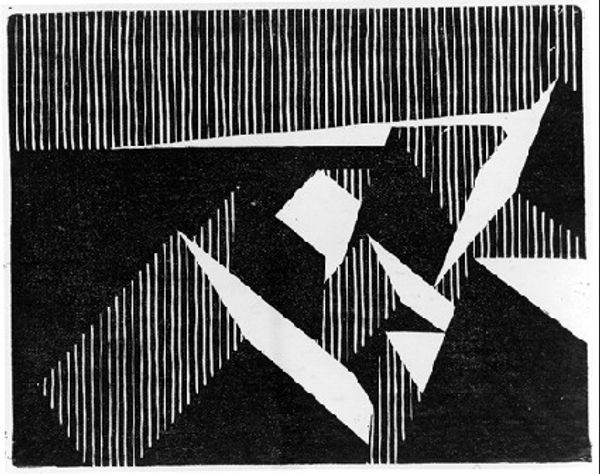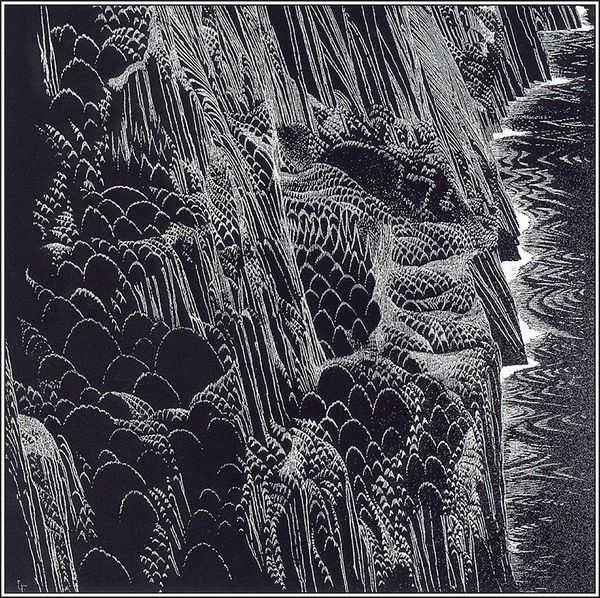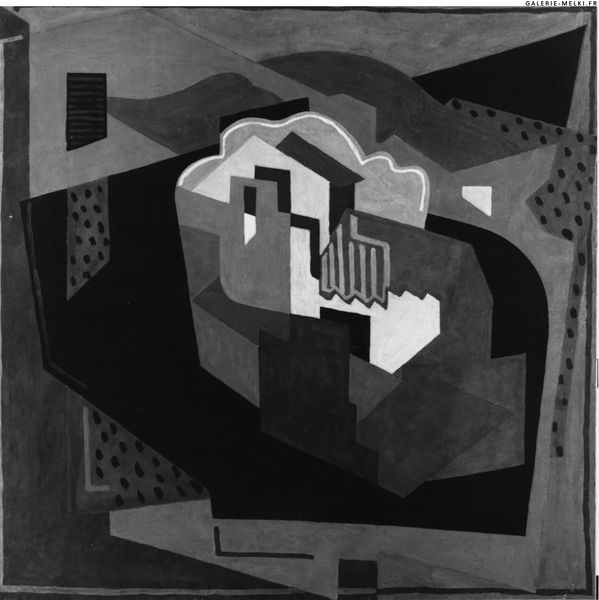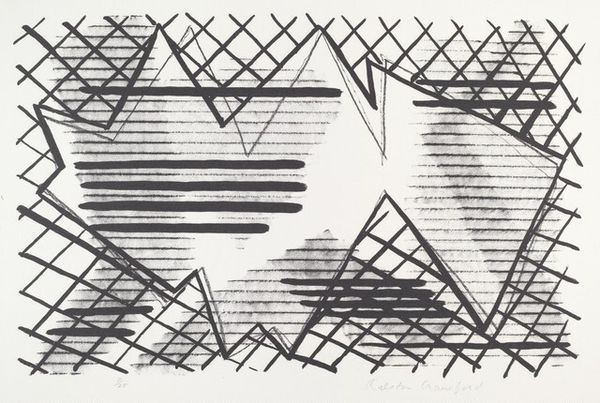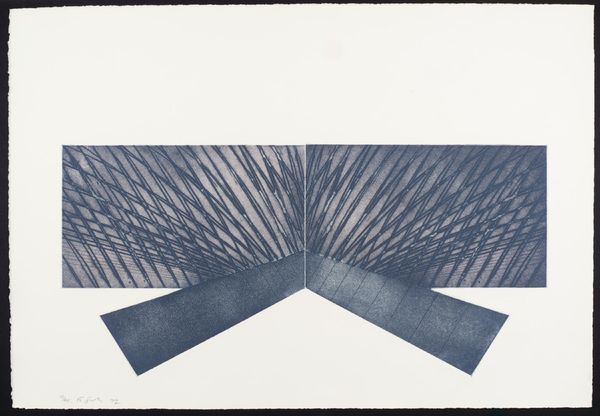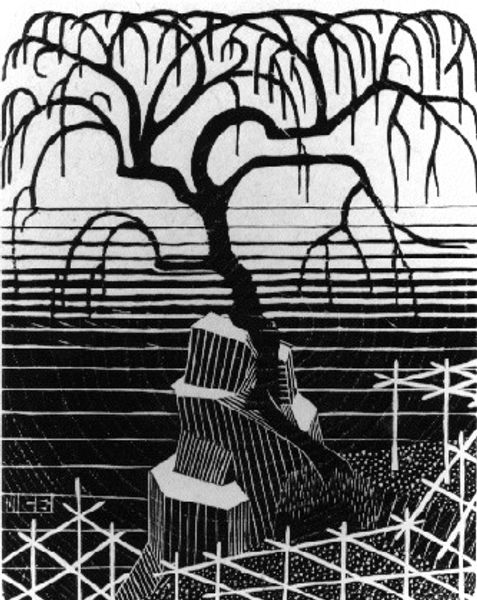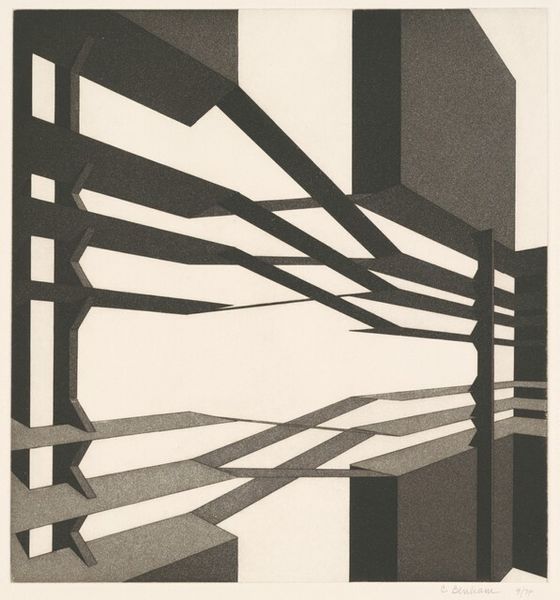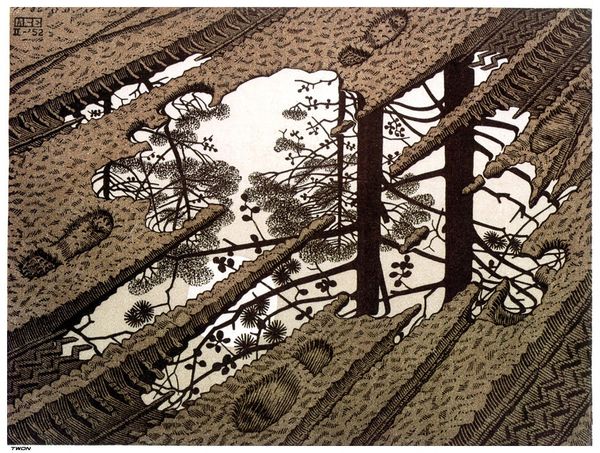
Copyright: Public domain US
Curator: This is M.C. Escher's woodcut from 1919, titled "Blocks of Basalt along the Sea". Editor: Striking! The repetition creates this hypnotic sense of depth. Almost like a visual mantra, but with a harsh edge. Curator: Let's talk about that harsh edge. This piece, typical of early Escher, relies heavily on the woodcut technique. Think about the labor involved – the careful carving, the pressure of the press. It's a physically demanding medium, not easily forgiving. That physicality, I think, mirrors the solidity of the basalt itself. Editor: Indeed. The vertical lines especially; they remind me of ancient runes, geological timestamps or some other record carved over millennia, worn down, but still present. Do you sense an ambiguity with the horizon line? The crosshatching that is meant to describe volume creates an illusion of a distorted plane. Curator: Absolutely. The print's monochromatic nature also throws focus on his technical process, the labor manifest. The wood's resistance determines how the line translates onto paper. He coaxes such texture from just black and white. Editor: The visual textures play against each other so strikingly, drawing us into that moment, but the patterns also abstract the scenery to create more emotional resonance. It suggests an enduring relationship to those shores, both of the labor and a longing of time itself. Curator: Precisely! Think about post-Impressionism's influence here, particularly its interest in the artist's subjective experience of the landscape. Yet, Escher anchors his artistic impulse to such literal physicality, which comes from the carving tools. Editor: Well, it gives one pause, doesn't it? Considering the legacy of symbols passed down across generations, the way that labor creates that symbolic bridge… Curator: A perfect synthesis to understand the print more profoundly. Editor: I’ll carry the images evoked by Escher's craft with me; thank you!
Comments
No comments
Be the first to comment and join the conversation on the ultimate creative platform.
